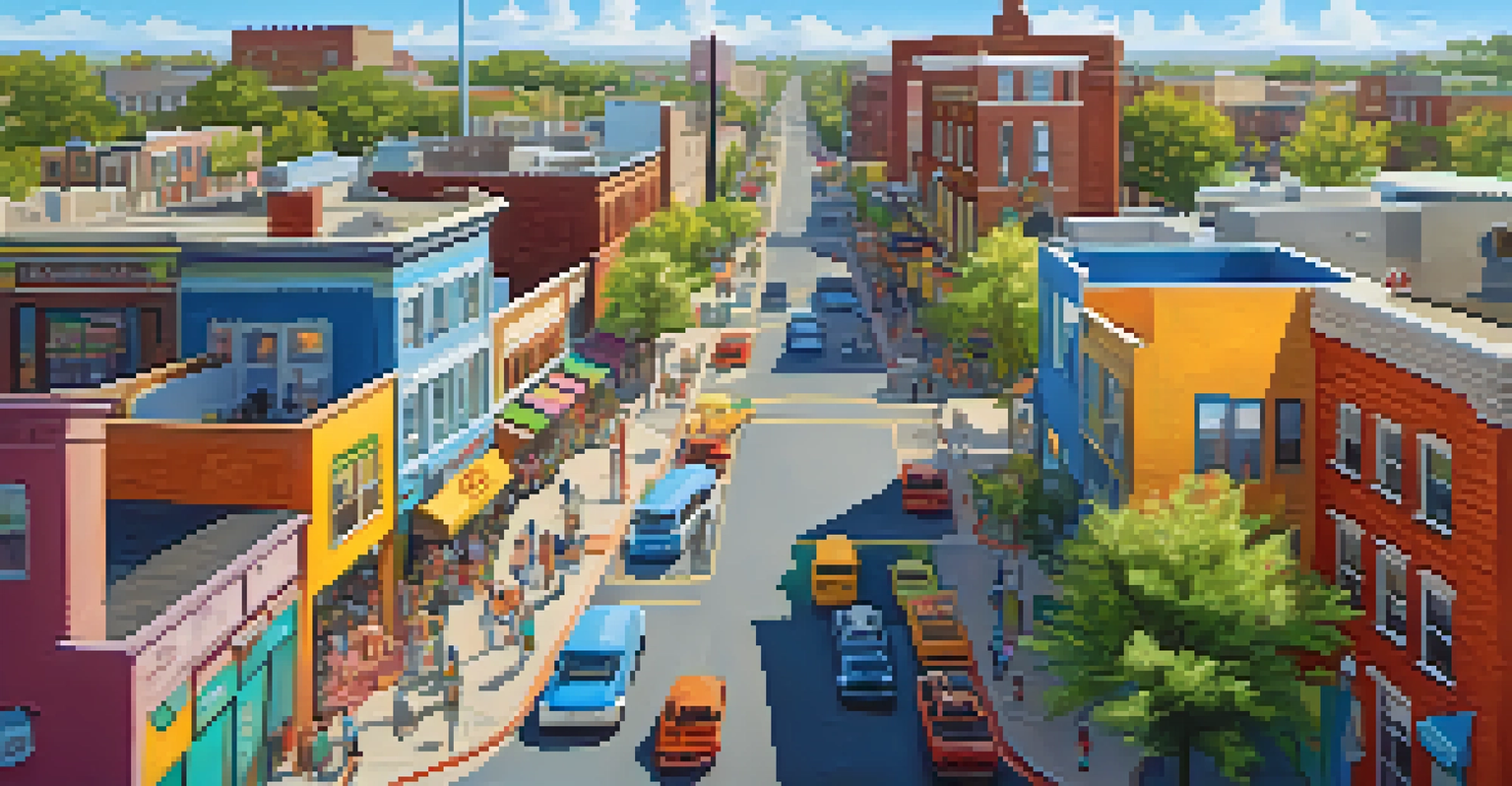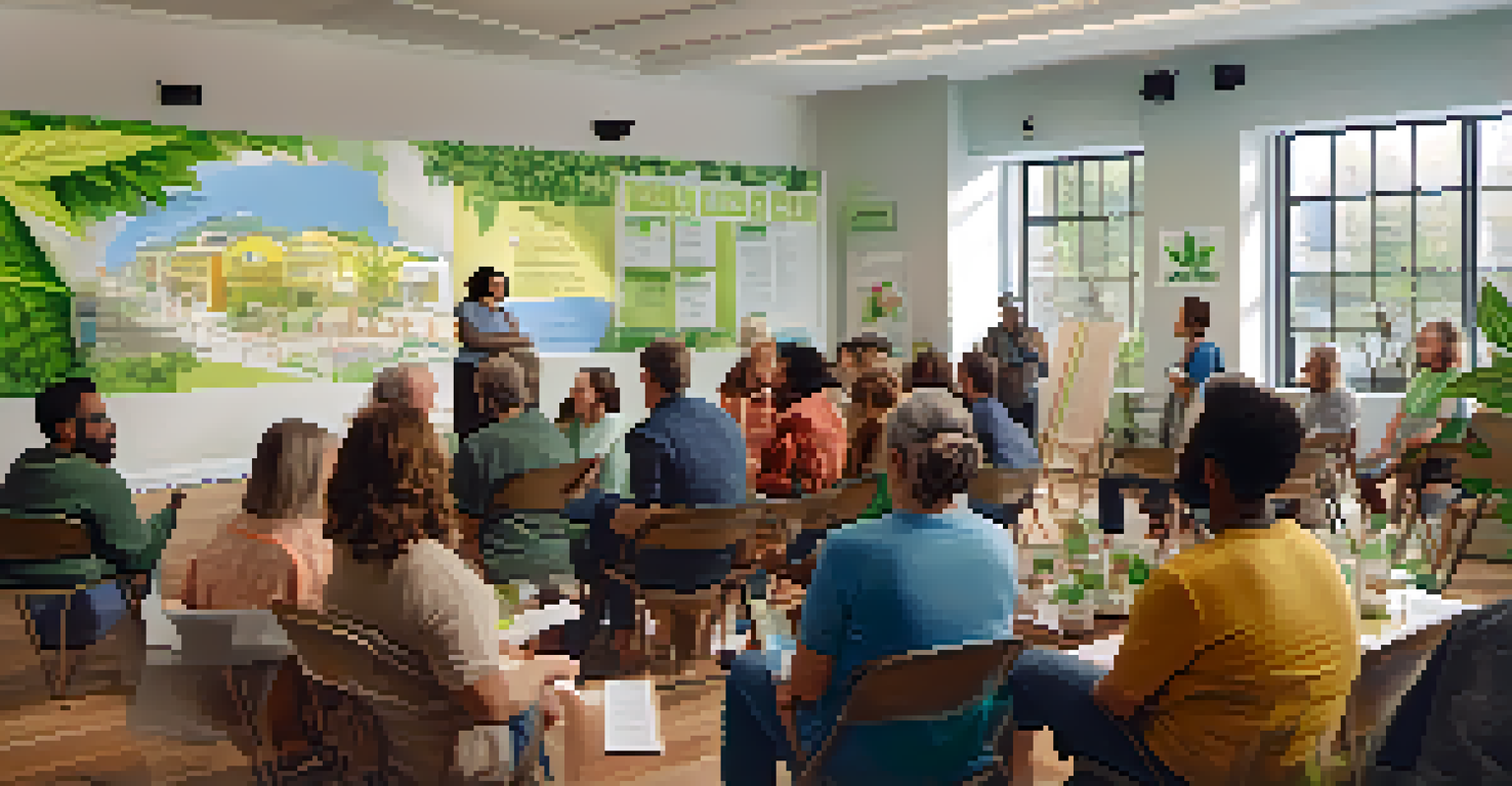The Role of Marijuana in Urban Revitalization Projects

Understanding Urban Revitalization and Its Goals
Urban revitalization is a process aimed at rejuvenating declining city areas. It involves improving infrastructure, enhancing public spaces, and attracting new businesses. The ultimate goal is to create vibrant, livable communities that foster economic growth and social well-being.
A city is not an accident but the result of coherent visions and aims.
As cities grapple with challenges like population decline and economic stagnation, revitalization efforts can breathe new life into neglected neighborhoods. By integrating various strategies, urban planners aim to create environments where residents feel safe and engaged. This approach often includes community input to ensure that revitalization aligns with local needs.
In recent years, marijuana legalization has emerged as a unique tool within these revitalization efforts. By focusing on cannabis-related businesses, cities can generate tax revenue, create jobs, and attract visitors, all of which contribute to a more dynamic urban landscape.
The Economic Benefits of Cannabis Legalization
One of the most significant advantages of legalizing marijuana is the economic boost it provides. Cities that have embraced cannabis often see an influx of tax revenue, which can be reinvested into community services and infrastructure improvements. This financial support can be crucial for neighborhoods that have faced years of disinvestment.

Additionally, marijuana businesses create jobs, not only within the cannabis industry but also in ancillary sectors like retail and hospitality. As these businesses flourish, they can draw more visitors to the area, further stimulating local economies. For instance, cannabis dispensaries often attract tourists, which benefits nearby restaurants and shops.
Revitalization Boosts Urban Areas
Urban revitalization aims to rejuvenate declining neighborhoods by improving infrastructure and attracting businesses.
Moreover, the cannabis industry can serve as a catalyst for further investment in urban areas. As more businesses open, the demand for commercial real estate increases, leading to property development and revitalization of surrounding areas. This interconnected growth can transform once-neglected neighborhoods into thriving hubs.
Community Engagement and Cannabis Initiatives
Successful urban revitalization requires active community engagement, and cannabis initiatives are no exception. When local governments consider marijuana-related projects, involving community members in the decision-making process is vital. Their insights can help shape policies that reflect the values and needs of residents.
The best way to predict the future is to create it.
For instance, some cities have established community advisory boards to discuss cannabis legislation and its implications. This approach not only fosters transparency but also builds trust between local officials and residents. When communities feel heard, they are more likely to support revitalization projects.
Additionally, educational programs about responsible cannabis use can be developed to address concerns and promote safety. By prioritizing community well-being alongside economic growth, cities can ensure that marijuana initiatives contribute positively to the urban landscape.
Case Studies: Successful Urban Revitalization with Cannabis
Several cities have successfully integrated cannabis into their revitalization efforts, providing valuable lessons for others. For example, Denver, Colorado, has seen significant economic growth since legalizing marijuana. The city has transformed its neighborhoods, with cannabis businesses playing a key role in attracting visitors and residents alike.
Similarly, Portland, Oregon, has leveraged its cannabis industry to boost local entrepreneurship. Many small businesses have emerged in the cannabis sector, contributing to a thriving economy. This growth has led to increased public investment in infrastructure and community programs, enhancing the overall quality of life.
Cannabis Drives Economic Growth
Legalizing marijuana can generate significant tax revenue, create jobs, and stimulate local economies through increased tourism.
These case studies illustrate that, when implemented thoughtfully, cannabis can serve as a powerful tool for urban revitalization. By learning from successful models, other cities can explore how to incorporate marijuana into their own revitalization strategies.
Addressing Challenges and Concerns
While the integration of marijuana into urban revitalization holds promise, it also presents challenges that need to be addressed. Concerns about public safety, crime, and drug abuse can arise in communities where cannabis is legalized. It's essential for city officials to proactively communicate how they plan to mitigate these issues.
Moreover, zoning laws and regulations surrounding cannabis businesses can be complex and may require careful navigation. Cities must strike a balance between fostering a vibrant cannabis economy and ensuring that it aligns with community values and safety. This often involves collaboration between local governments, law enforcement, and community organizations.
By acknowledging these challenges and working to address them, cities can create a more sustainable approach to cannabis legalization within revitalization projects. Open dialogue and community engagement will be crucial in fostering an environment where both residents and businesses can thrive.
The Role of Education and Awareness
Education plays a pivotal role in the successful integration of cannabis into urban revitalization. Increasing public awareness about the benefits and risks associated with marijuana can help dispel myths and reduce stigma. This, in turn, can foster a more informed community that is open to the idea of cannabis businesses.
Local governments can implement educational campaigns that highlight responsible use, legal rights, and the economic benefits of cannabis. Schools and community centers can also host informational sessions to discuss these topics. By equipping residents with knowledge, cities can create a more supportive atmosphere for cannabis initiatives.
Community Engagement is Essential
Involving residents in cannabis initiatives ensures that revitalization efforts align with community values and needs.
Furthermore, educational programs can extend to aspiring entrepreneurs interested in entering the cannabis industry. By providing resources and training, cities can help cultivate a new generation of business owners who can contribute to local revitalization efforts.
Future Perspectives on Marijuana and Urban Development
Looking ahead, the relationship between marijuana and urban revitalization is likely to evolve as more cities consider legalization. As public opinion shifts and more states adopt cannabis-friendly policies, urban planners will need to adapt their strategies accordingly. This means embracing innovative approaches that leverage the economic potential of cannabis while addressing community concerns.
Cities can explore various models for cannabis integration, from dedicated districts to mixed-use developments that incorporate both residential and commercial spaces. By thinking creatively, urban planners can create environments where cannabis businesses coexist harmoniously with other community assets.

Ultimately, the future of marijuana in urban revitalization will depend on collaboration among stakeholders, including residents, businesses, and local governments. By working together, these groups can build vibrant urban spaces that reflect the diverse needs of their communities while harnessing the economic benefits of cannabis.